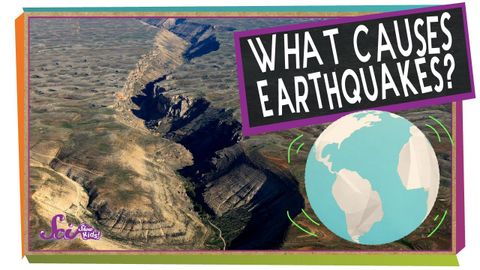What Causes Earthquakes?
joey joey が 2021 年 05 月 10 日 に投稿  この条件に一致する単語はありません
この条件に一致する単語はありません- v.t./i.突き刺す : 刺し込む;貼る : くっつける;とどまる;突き出す;我慢する
- n. (c.)棒
US /fɔrs, fors/
・
UK /fɔ:s/
- n.軍隊;力;強制;武力;影響力;勢い;警察
- v.t.強要する;こじ開ける;促成栽培する
- adj.確かな;固形物;頑丈につくられた;隙間がない;固形物の
- n.固体
エネルギーを使用
すべての単語を解除
発音・解説・フィルター機能を解除

